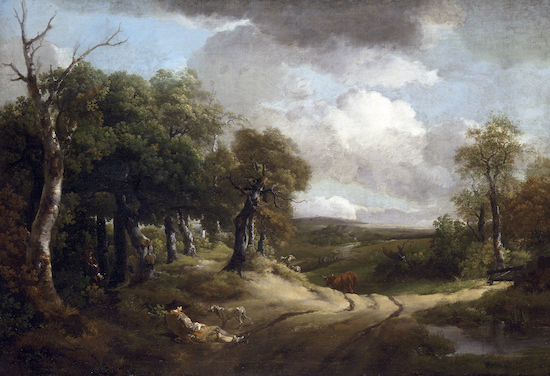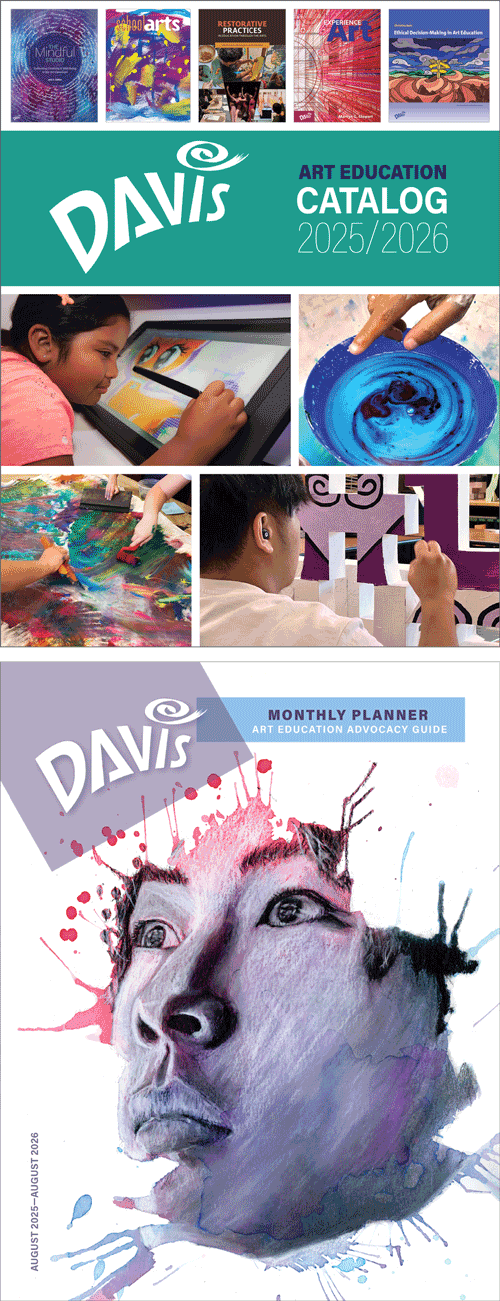Artist Birthday: Thomas Gainsborough
Thomas Gainsborough’s art was the epitome of the elegant, sophisticated and generally low-key Rococo style that characterized late 1700s British art. It was a major contrast to the flamboyant, overly decorated French Rococo style of the same period.
Artist birthday for 14 May: Thomas Gainsborough (1727–1788, Britain)
Thomas Gainsborough was a premier Rococo portrait painter and landscape artist.
 |
| Thomas Gainsborough, Rest on the Way, 1747. Oil on canvas, 101.9 x 147.3 cm. © 2025 Philadelphia Museum of Art. (PMA-97) |
While portraiture was the money-making part of painting for Gainsborough, landscape painting was his true passion. As early as 1769 he had written that he preferred landscapes to portraits. Rest on the Way is one of Gainsborough's landscapes that evolved from early, naturalistic scenes in the Dutch manner with genre figures, often related to specific sites, to his later, romantic grand landscapes that were made up spots with sweeping vistas and dramatic lighting effects.
Gainsborough applied the same wispy brush strokes for leaves as he did for highlights on surfaces, giving the same painterly, sketchy affect he achieved in his canvases. They are not the classically organized landscapes of the Baroque, but rather romantic views of the idyllic countryside that the British considered God's country.
Gainsborough's landscapes had a lasting effect on English landscape painting. John Constable (1776–1837) and Joseph M.W. Turner (1775–1851), the two giants of British landscape in the first half of the 1800s, both applied Gainsborough's use of dramatic lighting and breadth of landscape expression in their works. Both Constable and Turner depicted specific locations, although Turner's works were often more evocative through his emphasis on color, light and atmosphere.
The Baroque period in Britain was dominated by artists from Europe: Peter Paul Rubens (1577–1640), Antonie van Dyck (1599–1641), and Peter Lely (1618–1680) for example. Despite the Royal Academy's tyrannical existence in London, unlike France, British art was not dominated by artists preferred by the court. The passing of the generation of foreign Baroque painters who were more or less connected with British nobility and court, led Britain in the 1700s to focus on regional schools of art, particularly in the areas of landscape and portraiture.
While Baroque ideals of celebration of the ruling class and drama in historical subjects persisted, 1700s painting in Britain is characterized overall by turning inward and examining British life, scientific advances, and the British landscape. It is a more restrained and less artificial Rococo style than on the Continent, and has an anecdotal quality similar to Dutch Baroque genre of the 1600s. By the late 1750s, after the discovery of the ruins of the Roman city of Pompeii in 1748 and the revival of a mania for all things classical, classicism was embraced by British artists as well.
At the same time classicism crept quietly into British painting, an interest in landscape painting evolved, tied closely to the traditional British interest in what they considered their unique land and culture. While some landscapes represented idealized versions of the classical past, other landscape artists painted personal visions of the natural world.
Thomas Gainsborough is most renowned for his portraiture, but, he painted many landscapes with a highly personal, stylized realism that transcended any actual period or place. Born in Sudbury, Suffolk to a cloth maker, Gainsborough was an artistic prodigy. He probably studied at a young age under a Dutch or Flemish landscape painter, because Suffolk had traditionally close ties to the Low Countries (now Belgium, Netherlands, Luxembourg), an area of Europe that pioneered landscape as a stand-alone subject matter.
Around 1740 he went to London where he studied under the French artist Hubert Gravelot (1699–1773) and Francis Wayman (1708–1776). From Gravelot, Gainsborough gleaned some of the Rococo sensibilities, such as a pastel palette and shimmering effects of light on depictions of luxurious materials. From Wayman, a theater scene painter and portraitist, he solidified his portrait technique.
Gainsborough established his own studio around 1745, moving first back to Sudbury, then to Bath. Bath was at the time a fashionable resort for the upper classes, and Gainsborough established his portrait reputation there, frequently sending works to London for annual exhibitions at the Society of Artists. The strength of his reputation in London engendered an invitation to be a founding member of the Royal Academy in 1768. Gainsborough's relationship with the Academy was always tenuous, not only because of his rivalry with Joshua Reynolds (1723–1792), the rabid classicist and president, but also because he objected to the way his works were hung. After 1784, he never exhibited there again.

Comments